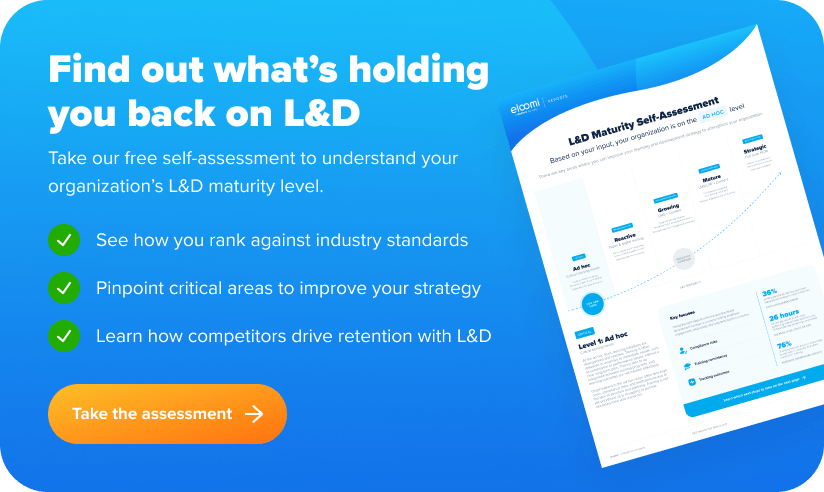What is synchronous communication?
Synchronous communication is real-time communication between two or more team members. It is a highly interactive, live exchange of information that can happen in-person or virtually.
Many organizations use synchronous communication for team meetings and decision-making purposes. The main idea behind synchronous communication is that all people communicate simultaneously, leading to quicker information exchange and resolutions.
This form of communication is usually scheduled at everyone’s convenience but can sometimes be abrupt. Of course, it’s best practice to plan an urgent meeting and let the other person know beforehand if possible, though.
6 Examples of synchronous communication
Some examples of synchronous communications include:
- In-person meetings
- Direct messaging/instant messaging
- Phone calls
- Video conferencing tools like Zoom, Google Hangouts or Microsoft teams
- Video messages through apps like Loom
- Video calls through workspace and collaboration tools like Slack

What is asynchronous communication?
Asynchronous communication is a type of communication where the exchange of information is not always in real-time. There is a time gap between when a person sends a message and when the other person responds.
The people involved in asynchronous communication are not obligated to give an immediate response and have the flexibility to reply and interact in their own time. This type of communication is usually unplanned and does not happen live. It works best when interacting with remote workers, remote employees, and clients.
4 Examples of asynchronous communication
Some asynchronous communication methods include:
- Email/direct mail
- Direct and text messaging
- Video recordings such as e-learning and digital training courses
- Project management tools and apps such as Asana and Trello
In this article, we’ll discuss the differences between the two and how you can take advantage of async communication to advance your workflows.

What is the difference between asynchronous communication vs synchronous communication
The main difference between these two communication styles is that synchronous communication is in real-time while asynchronous communication is not, requiring more back-and-forth. This makes synchronous communication faster and more ideal for quicker resolutions and urgent status updates. On the other hand, asynchronous communication happens over a longer period of time and the participants can respond to each other at their convenience, meaning it is more suitable for people in different time zones who do not need to discuss any urgent projects or requirements.
During synchronous communication, the focus is to build personal relationships with other participants for better understanding and receive instant feedback. Whereas, asynchronous communication requires a different type of understanding and respect for the other person’s time. It focuses on using the right tools for communication and being as detailed and comprehensible as possible.
Both communication channels can be used for learning purposes among co-workers. However, the approach is highly different.
Learning with synchronous communication includes video conferences where all participants attend the classes at the same time. Whereas, asynchronous learning includes using pre-recorded videos and webinars for teaching and demonstration. With synchronous learning, participants can get their concerns and doubts addressed quickly and on the spot. And with asynchronous learning, participants get the convenience to learn at their own pace.

More organizations have started to observe the benefits of asynchronous learning over the course of the pandemic. These include:
- allowing the learners to gain a better understanding
- rewatching/rereading the content for doubt clearance and revision
- learning at their desired pace
Explore the advantages of asynchronous learning in detail in this study by MIT.
Asynchronous communication is a great option for onboarding and compliance training as it takes the load off of managers while offering great knowledge about operations and sharing best practices.
Benefits of asynchronous communication
Synchronous communication takes a lot of preplanning and is subject to the availability of the participants. It often requires a lot of effort and can be delayed due to various reasons. Conversely, async communication does not require prior planning and huge efforts and can offer many great benefits.
Some of the main benefits of asynchronous communication include:
Flexibility
In the era of remote working, continuous communication may not be a feasible option for many. With asynchronous communication, you get the flexibility to respond in your own time. There is no need to plan your workday around specific meetings or communications, and you can work during your most productive hours. It gives you the freedom to prioritize critical tasks instead of sitting and replying to non-stop messages.
Time-zone friendly
It can be challenging to keep up with a continuous conversation when both parties stay in different time zones. Your working hours may be their resting hours, and the convenient time for a conversation may be different. Using asynchronous communication tools is an ideal way of communicating with people in different time zones. It allows you to respond at a convenient time for you as the other person does not expect an immediate response.
Honest communication
When communication is not continuous, it also allows space for you to think and respond clearly with great ideas. This type of communication may be slower but is of high quality and helps you get better resolutions. It also helps avoid unnecessary messages and confusion as you get enough time to understand the message and respond appropriately.
Greater transparency
Synchronous communication is often verbal and can be misinterpreted. Whereas, with asynchronous communication, you can get a record of the conversation for your reference. It means there is greater transparency and ensures the delivery of important and sensitive information to everyone involved.
Additionally, you can always go back to your messages on Slack or emails in case of doubts and hold the person accountable for any conflicts.
Increased productivity
When you don’t have to plan your day around a meeting, there is more room for being productive. Employees may spend a lot of time scheduling and attending meetings which can affect their productivity. Asynchronous communication allows you to prioritize and focus on more important tasks rather than worrying about responding immediately to a conversation.
Organizations can achieve overall increased productivity among employees by adopting asynchronous communication. You can read more about how asynchronous communication is taking over in the remote working era here.

Choose eloomi for asynchronous learning
Real-time synchronous communication requires all participants to be available at the same time for quicker discussions. On the contrary, asynchronous communication does not require all participants to communicate continuously and allows flexibility in responding.
While synchronous communication can help in case of urgent discussions, asynchronous offers greater benefits for operational communication. It lets you be more productive, offer and receive better ideas and achieve a clear understanding of the issue.
eloomi offers a variety of asynchronous learning programs on an LXP platform to help you improve the employee experience in your organization and create a more productive team, well-equipped with knowledge and skills. You also get access to employee performance reports and insights to track the learning progress of your employees.
You can make learning fun and digestible with access to different modes of learning including assigned lessons, playlists, webinars and more.
Learn from experts and expand your knowledge by joining our programs for:
- Onboarding
- Compliance
- Training
- Tailored Content
Aside from pre-recorded learning, we also offer synchronous one-on-one learning solutions through one-on-one sessions.
Get started and book an LMS demo with us today!






